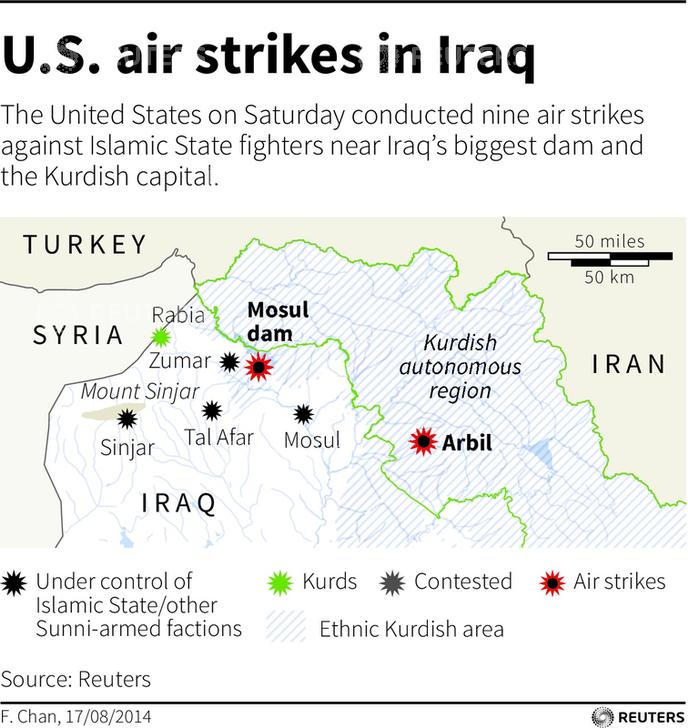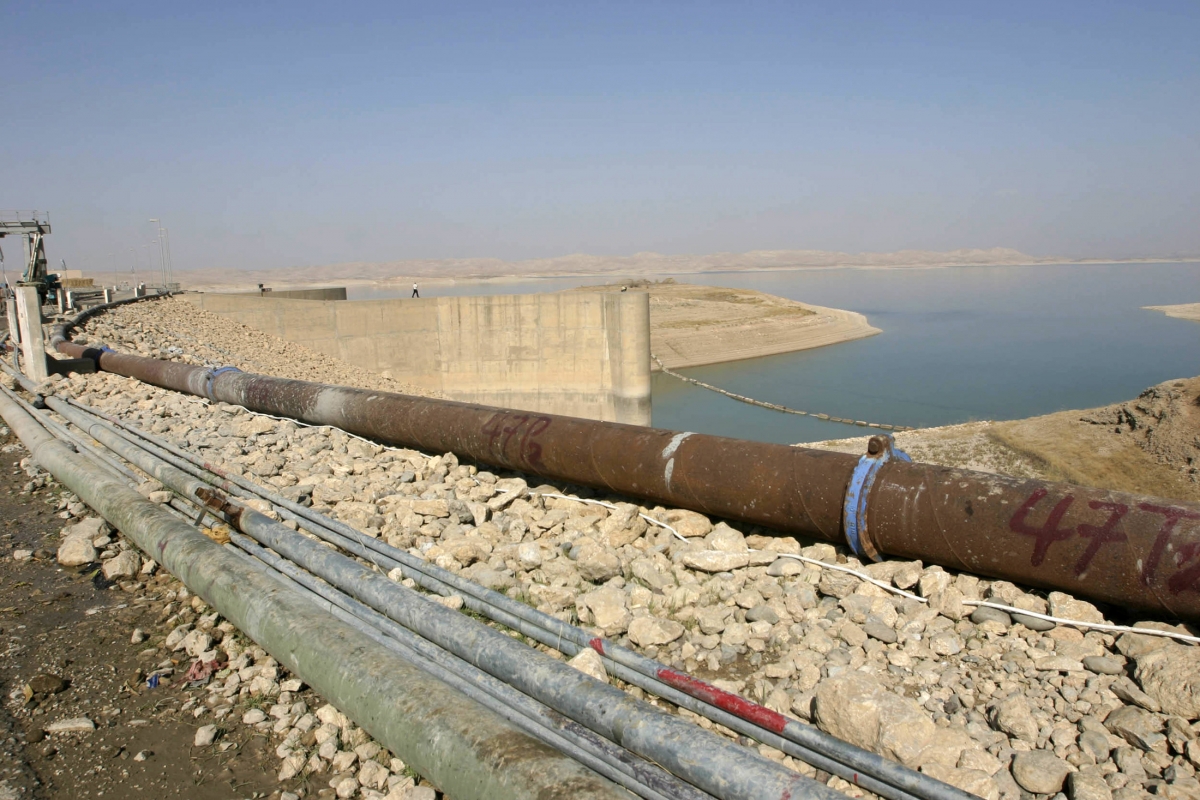US warplanes pounded Islamic State positions in northern Iraq on Sunday to help Kurdish forces on the ground to retake the Mosul dam from the militants.
After successful taking over the eastern part of Mosul dam, the Peshmerga forces are now trying to clear mines and booby traps laid by the militants, in order to reach the western part of the dam, which would give them complete contorl over the area.
The ISIS took control of the dam on 7 August, with the intention to flood the areas surrounding the dam, which generates electricity and provides water to a large part of northern Iraq.
"It is very important for the life in this area, for drinking water, for agriculture and other things. The other important thing, which is more important, is that if ISIS [IS] blows up this dam, then Mosul, Baghdad and other places will be damaged and will no longer exist," BBC quoted an unnamed Kurdish officer as saying.
To help regain control of the dam and to avoid damages caused by militants' incursion in the area, the US extended its help to Iraq for the first time since withdrawing its troops from the country in 2011.
US jets and armed drones reportedly attacked ISIS positions and destroyed or damaged 19 ISIS vehicles and one checkpoint surrounding the dam. The airstrikes helped Kurdish forces fight the militants on the ground, according to news reports.
US President Barack Obama had ordered air strikes on the extremists, on the request of the Iraqi government, stating that it is in the country's interest to protect American embassies and the US personnel based in Baghdad.
"The failure of the Mosul Dam could threaten the lives of large numbers of civilians, threaten US personnel and facilities - including the U.S. embassy in Baghdad - and prevent the Iraqi government from providing critical services to the Iraqi populace," read a White House statement.
"These operations are limited in their nature, duration, and scope and are being undertaken in coordination with and at the request of the government of Iraq."



















